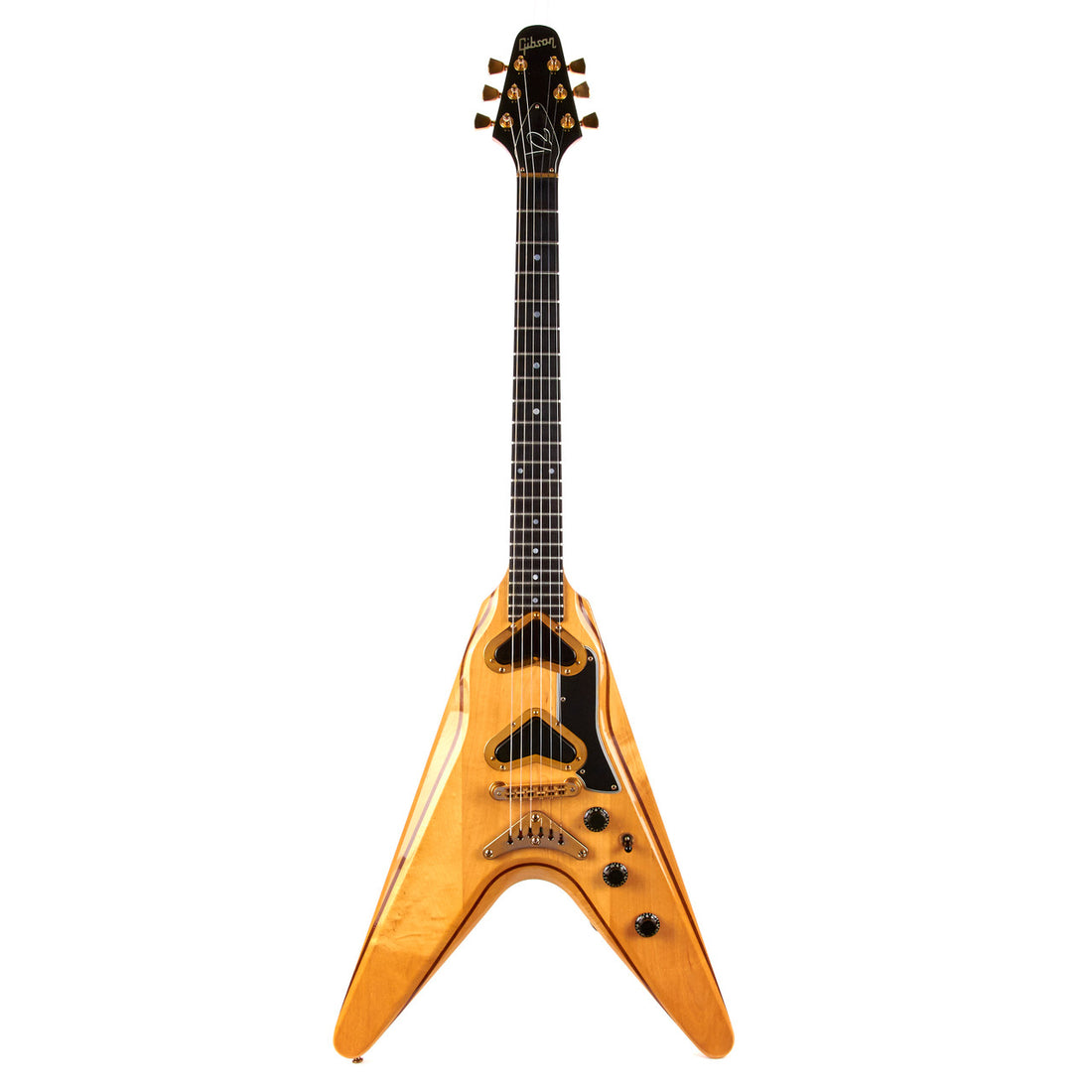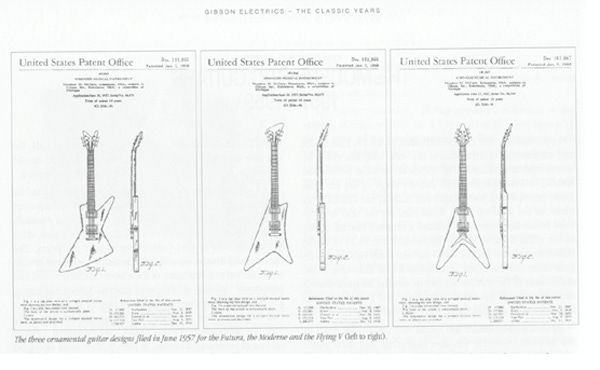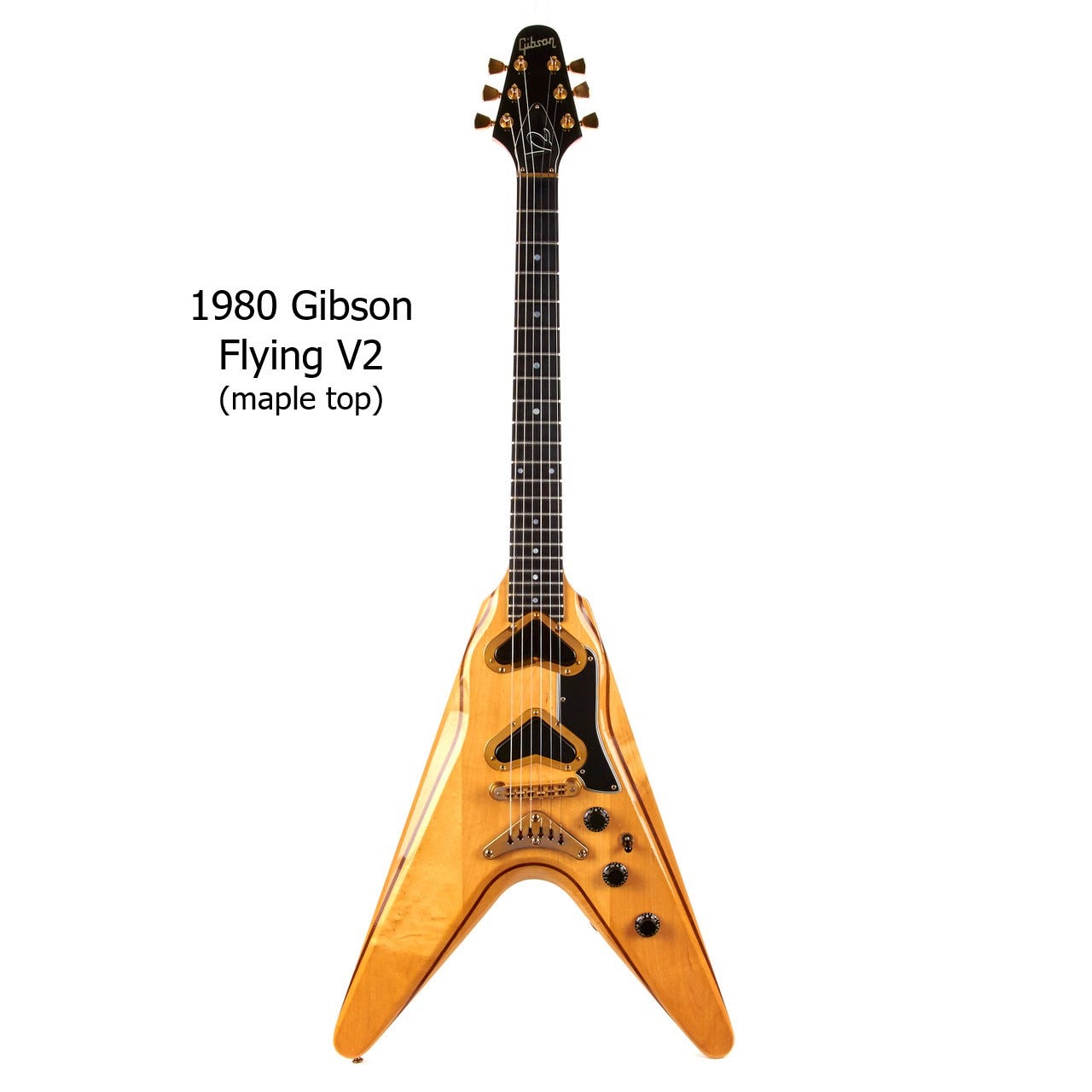Breaking down a moving line in a chord cluster. (Am variant and Major)
Professor Steve, "In the same way that a new word or term or phrase can enhance your communication in a verbal conversation, so too can a new maneuver or passage of chords enhance what you say in a musical conversation.
"We're full of magic around here at all times!"
Gibson’s Ted McCarty, with the help of a design team developed three revolutionary guitars in 1957. (The patents bear his name only.) They were the Flying V, Explorer, and Moderne.
The Explorer was originally dubbed “Futura”. The Futura and Moderne names expressed Gibson’s thoughts on the “future” generations of “modern” guitars. The Explorer and V went into production in 1958, but the Moderne is so weird it took until 1981 before it was released.
Less than 100 V’s were produced from 1958 to 1959 and Gibson shelved the model until 1966. That said, some leftover parts were used to piecemeal an unaccounted number of V’s in 1962/63.
When production resumed in 1966 Gibson still didn’t know what to do with this thing and only made approximately 200 total units from 1966 to 1970. The V was abandoned once again until 1976 and since then some iteration of the V has remained in Gibson’s line-up like the 2006 model below available for auction now- https://guitargavel.com/products/2006-gibson-usa-flying-v
In 1978 Tim Shaw of Gibson pickup fame was tasked to breathe new aesthetics into two “old” models. They were to be the Explorer E2 and Flying V2. The common denominator between the cousin guitars is a 5-layer walnut and maple body. The edge was carved in a manner so you could see the wood layers, think fancy cutting board.
The V2 was the second most expensive solid body offering from Gibson when it was introduced: gold hardware, ebony fretboard, and mother-of-pearl Gibson headstock logo. Furthermore, Gibson tried to create a sustain machine with a brass tailpiece, brass nut, and brass bridge studs.
Of most interest are the boomerang humbuckers designed to sound like single coils, also courtesy of Tim Shaw.
Swing and a miss!
The hardware flair didn’t cut it and within a year “dirty finger” pickups replaced the boomerangs as well as color finish options and a soap bar tailpiece. The V2’s were sold for less than three years, from mid 1979 to January 1982.




